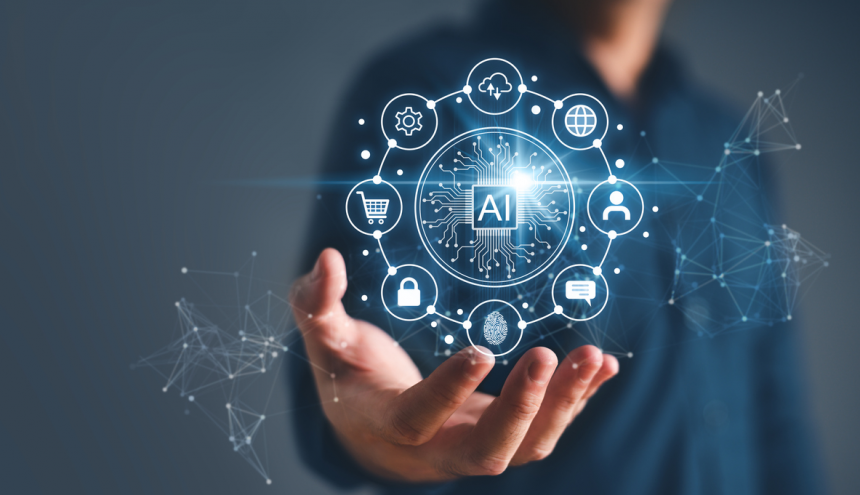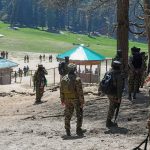In an age ruled by silent algorithms and glowing screens, where imagination is being digitized and thoughts mechanized, humanity finds itself at a tantalizing crossroads. The rise of Artificial Intelligence (AI) is not merely a tale of machines learning to mimic our actions; it is a whisper at the very edges of consciousness, suggesting a revolution of mind and meaning. As we gaze into the blinking eyes of synthetic minds, the question that pierces the heart of this metamorphosis is not technological but existential: what becomes of human creativity when the machine begins to dream?
The history of human civilization is, at its core, the story of creativity. From the primal ochre strokes on the walls of ancient caves to the symphonic swell of a Beethoven composition; from the cryptic poetry of Rumi to the architectural marvels of Florence and Fatehpur Sikri—this is the tapestry woven by our urge to create, to interpret, to reimagine. Creativity has long been regarded as our divine inheritance, an unreplicable spark that separates man from matter. But the present era dares to challenge that exclusivity.
Today, machines are painting portraits, composing sonatas, writing poetry, and scripting novels. AI-generated art exhibitions attract global attention. Neural networks simulate Van Gogh’s brushwork with eerie accuracy, and algorithms like GPT-4 compose prose that resonates uncannily with human sensibility. In this shimmering dawn of techno-creativity, the age-old muse of inspiration finds itself confronted by something unprecedented: the muse that has no soul, yet knows the soul’s language.
Can machines be truly creative? Or are they merely mirror halls, reflecting the data they have consumed? The literary mind, which seeks nuance and dwells in ambiguity, must tread carefully here. Creativity is not merely a function of assembling elements in novel configurations. It is a wound, a yearning, a rebellion against silence. It is the language of longing, the revolt against the absurd. And can a machine long? Can it ache?
Perhaps not. But then comes the paradox. In simulating creativity, AI begins to expose us—brutally, beautifully—to our own patterns. The machine does not dream, yet it can replicate dreams. It does not feel, yet it can assemble the architecture of feeling. And in doing so, it becomes a mirror not just of language but of the very mechanisms of thought. It reveals to us how predictable we often are, how formulaic even our wildest imaginations can become when dissected statistically.
But here lies a haunting realization: if the machine can paint, write, compose, and even innovate, then what remains uniquely human? Some argue that this is the twilight of human genius, that AI will make artists obsolete, thinkers redundant, and creators irrelevant. Such arguments, however, are often born not of insight but of fear—a fear that the divine fire we once believed to be ours alone can now be kindled by circuits. Yet, is it not in the crucible of crisis that creativity truly shines?
This is not the death of creativity—it is its rebirth. For AI, in its purest potential, is not a rival but a collaborator. It is not the poet; it is the echo chamber through which the poet hears their own voice more clearly. It is the sketchbook that never runs out of pages, the co-author who tirelessly suggests, the interlocutor who listens without fatigue. In the hands of a true artist, AI becomes chisel and clay—not the sculptor. The future, then, may not be a question of machine versus man, but of how man evolves with the machine.
Take for instance, the way AI is transforming music. In the studios of electronic composers, algorithms suggest harmonies that the human ear might never have imagined. In architecture, AI helps conceptualize spaces that breathe in harmony with natural ecosystems. In literature, AI becomes a tool of structural experimentation—a partner in playful chaos. The poet can now invite the machine into the act of creation, allowing it to disturb patterns, provoke dissonance, generate poetic tangents. This is not a loss of soul but an expansion of the sensory field.
And yet, the artist must beware because the danger is not that machines will become human. The danger is that humans will become machines. In an era where efficiency and productivity are worshipped, where time is sliced into milliseconds and the mind is trained to think in hashtags and metrics, the real threat is the corrosion of the human sensibility itself. The soul of creativity lies in slowness, in daydreams, in failures, in solitude. AI can produce content—but can it create silence? Can it create absence?
We must not let convenience rob us of chaos, or elegance replace effort. The act of writing, of painting, of composing, has always been as much about the process as the product. The tremble of the hand on canvas, the hesitation before a word, the sorrow of a failed stanza—these are not inefficiencies, they are sacred. To surrender all that to the smooth perfection of AI-generated output would be to trade the ocean for a mirror.
Moreover, true creativity is a question of context. A poem written in exile, a mural painted in rebellion, a song sung in mourning—these cannot be generated, for they are born of history, of the politics of the moment, of memory and resistance. AI may learn the structure of grief, but can it carry the weight of loss? It may simulate satire, but can it feel injustice? The depth of art comes not from its form, but from the fire that forges it.
And yet, we cannot deny the dazzling possibilities AI brings. It democratizes access to creative tools, enabling those without training to compose music, paint, write, and perform. It opens doors to collaboration across continents and cultures. It allows us to imagine art beyond the limits of our own cognition. The creative universe, once bound by the limits of flesh and form, now spills into realms we can barely describe. So what then, is the future of human creativity?
It lies not in resisting the machine, nor in surrendering to it—but in reimagining the relationship. It lies in reclaiming our role as curators, as meaning-makers, as souls who breathe spirit into code. The poet of the future may write with an algorithmic quill, but the ink must still come from the blood of their being. The painter may sketch with a robotic brush, but the canvas must still pulse with human imperfection.
In a world increasingly shaped by artificial minds, human creativity must become more daring, more intimate, more rooted in what machines cannot replicate: the depths of love, the agony of memory, the irrational beauty of myth, the tactile pain of longing. Our art must return to the primal, the personal, the poetic. It must embrace slowness, contradiction, vulnerability. We must become artists not despite the machine, but because of it.
Let the machines compose melodies; we will sing them in sorrow or joy. Let them paint skies; we will fill them with prayers. Let them write verses; we will give them meaning. For while the machine may create, only the human can consecrate.
In the end, AI is not a competitor to the creative soul. It is a reminder. A reminder that what we call “creative” must forever stretch, must always seek the unseen, must dwell not in replication but in revelation. The machine may help us reach higher—but the stars will still only speak to those who know how to listen.
And so, in this brave new dawn of electric muses and digital dreams, let us not despair. Let us create with more courage, more consciousness, more chaos. For in the shadow of the artificial, the authentic becomes sacred. And it is there, in that fragile flicker of soul, where true creativity shall always reside.
(Author is RK Columnist and can be reached at: [email protected])









